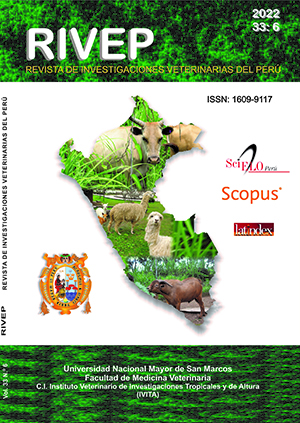Feed budget: a management tool for livestock production systems
DOI:
https://doi.org/10.15381/rivep.v33i6.22752Keywords:
forage planning, production cost, animal requirements, dry matter balanceAbstract
Forage management, strategic supplementation and the incorporation of monitoring tools for making timely decisions allow the development of livestock production systems. In this way, a feed budget is a tool that allows making a balance of the dry matter of the farm in a defined period of time, by comparing different units of measurement and making decisions regarding the management of forages and the purchase of feed resources as feeding strategies. In addition, elements such as the dry matter requirements of the groups of animals on the farm and the supply of dry forage throughout the year and its production cost must be considered. When comparing results from the exemplification of contrasting productive scenarios, it was found that, by having an unrestricted forage supply, feed costs increase by 208% due to the application of fertilization, the sowing of forage crops and the purchase of feeds from outside the farm. In another scenario, when there is evidence of a decrease in the forage supply, the scenario in which forage crops are used is the one with the lowest feed cost (COP$201/kg DM). In conclusion, the feed budget allows creating of feed scenarios that support the producer's decision-making, reduce feed costs and meet production goals.
Downloads
Downloads
Published
Issue
Section
License
Copyright (c) 2022 Juan Vargas Martínez, Elena Duter, Edgar Mancipe Muñoz, Javier Castillo, Yesid Avellaneda Avellaneda

This work is licensed under a Creative Commons Attribution 4.0 International License.
AUTHORS RETAIN THEIR RIGHTS:
a. Authors retain their trade mark rights and patent, and also on any process or procedure described in the article.
b. Authors retain their right to share, copy, distribute, perform and publicly communicate their article (eg, to place their article in an institutional repository or publish it in a book), with an acknowledgment of its initial publication in the Revista de Investigaciones Veterinarias del Perú (RIVEP).
c. Authors retain theirs right to make a subsequent publication of their work, to use the article or any part thereof (eg a compilation of his papers, lecture notes, thesis, or a book), always indicating the source of publication (the originator of the work, journal, volume, number and date).










